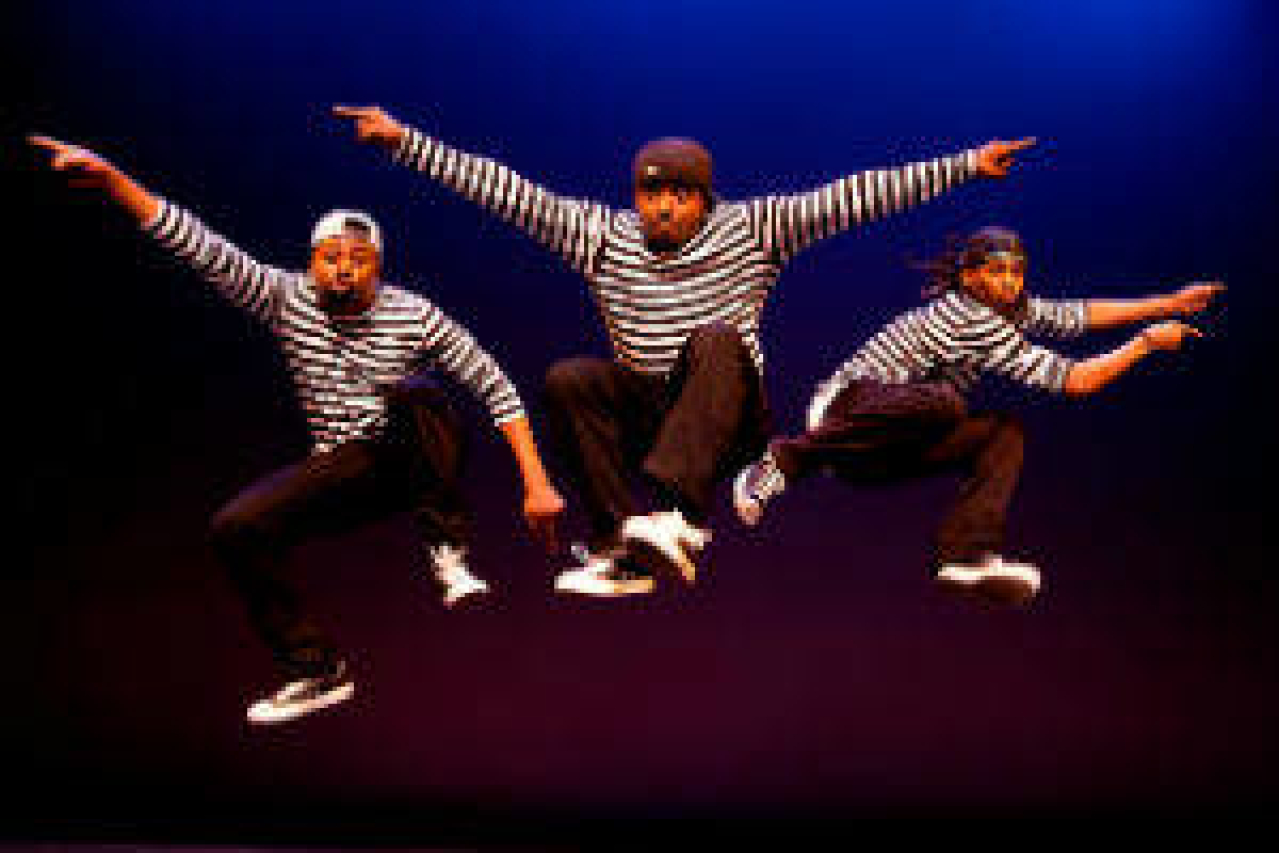LUV: American-Style

(© Brian Mengini)
Before the youthful, hip-hip extravaganza LUV: American-Style begins, a large projection towers above the stage to provide statistics on the incarceration rate of African-American juveniles. The information foreshadows the fate of several characters in the dance-themed performance, now running at the New Victory Theater. Directed and choreographed by Rennie Harris, LUV, with its talented ensemble of performers, entertains as a spectacle but falls short with its story and ambiguous message.
Infused with pulsating music by the likes of Queen, Bon Jovi, and Guns N' Roses, the show features a cast of performers from different racial backgrounds and tells the story of Brandyn, a young black man trying to make sense of the world and find his purpose in life. He and his friends now and then run afoul of the bumbling African-American cop P.O. McKnight, who draws the audience's scorn and a chorus of boos at the onset of the show when he "arrests" someone (one of the show's performers) seated in the front row for taking a picture of the stage.
Brandyn and several friends are thrown into jail by Officer McKnight for committing a crime of some kind. It's unclear what it was, but that doesn't matter, because whatever it was, Brandyn didn't do it. He's tossed into the pen with a dozen menacing orange-suited inmates where violent beatings and abusive cellmates are a part of everyday life. Fortunately, Brandyn is found innocent and released from jail, and then returns home to his girlfriend.
LUV: American-Style is at its best when its performers are locking, popping, and B-boying to familiar, hard-pumping songs like Queen's "Under Pressure" (the choreographed scenes are brilliantly lit by Amith Chandrashakar). For kids of all ages, seeing dancers move with such electric dexterity is a thrill to witness live onstage.
But Harris' story often becomes incoherent. If its purpose is to inspire discussion between kids and parents about race relations, or wrongly incarcerated black youth, or an imperfect legal system, or cops as risible bunglers (P.O. McKnight does remind us how much all communities really need the police), the show does not provide a cohesive tale (or lesson, for that matter) to provide a strong foundation for engaging in any sort of concrete post-show dialogue.
Some parents might prefer to save the 60-minute LUV: American-Style for teens because of the prison scenes and depictions of teenage dating. The dancing, however, can become infectious, inspiring kids of all ages to dance in their seats. That's just fine: P.O. McKnight won't arrest them for that.











